Nicole Sforza and Lisa Milbrand authored this RealSimple article on March 23, 2021, and they give some great tips on how to keep germs to a minimum in the bathroom.
I love Step#1 because it backs up what Urinal Fly has been preaching since 2009-keep the bathroom from getting too wet in the first place! Urine splashing off the toilet or urinal, against the wall, on the floor-NOT COOL. By giving your boys and men something to aim for, bathroom floors, bathroom walls, and toilets stay cleaner.
Below is the full RealSimple article. Enjoy
1 of 10 How Gross Is the Bathroom?
According to University of Arizona professor of microbiology Charles Gerba, who has conducted many studies of household bacteria, the bathroom is pretty darn gross. With supereffective tactics from Aggie MacKenzie, a coauthor of How Clean Is Your House?—and with Gerba’s gory details to spur you on—you can clobber germs like never before.
Rule #1 for keeping your bathroom clean? Keep it dry—so as you’re cleaning, make sure you dry all surfaces well afterward.
Whether you divvy up your antibacterial blitz into small sessions or complete your bathroom deep clean in one fell swoop, implementing these habits every couple of months will be like flushing your worries down the…well, you know.
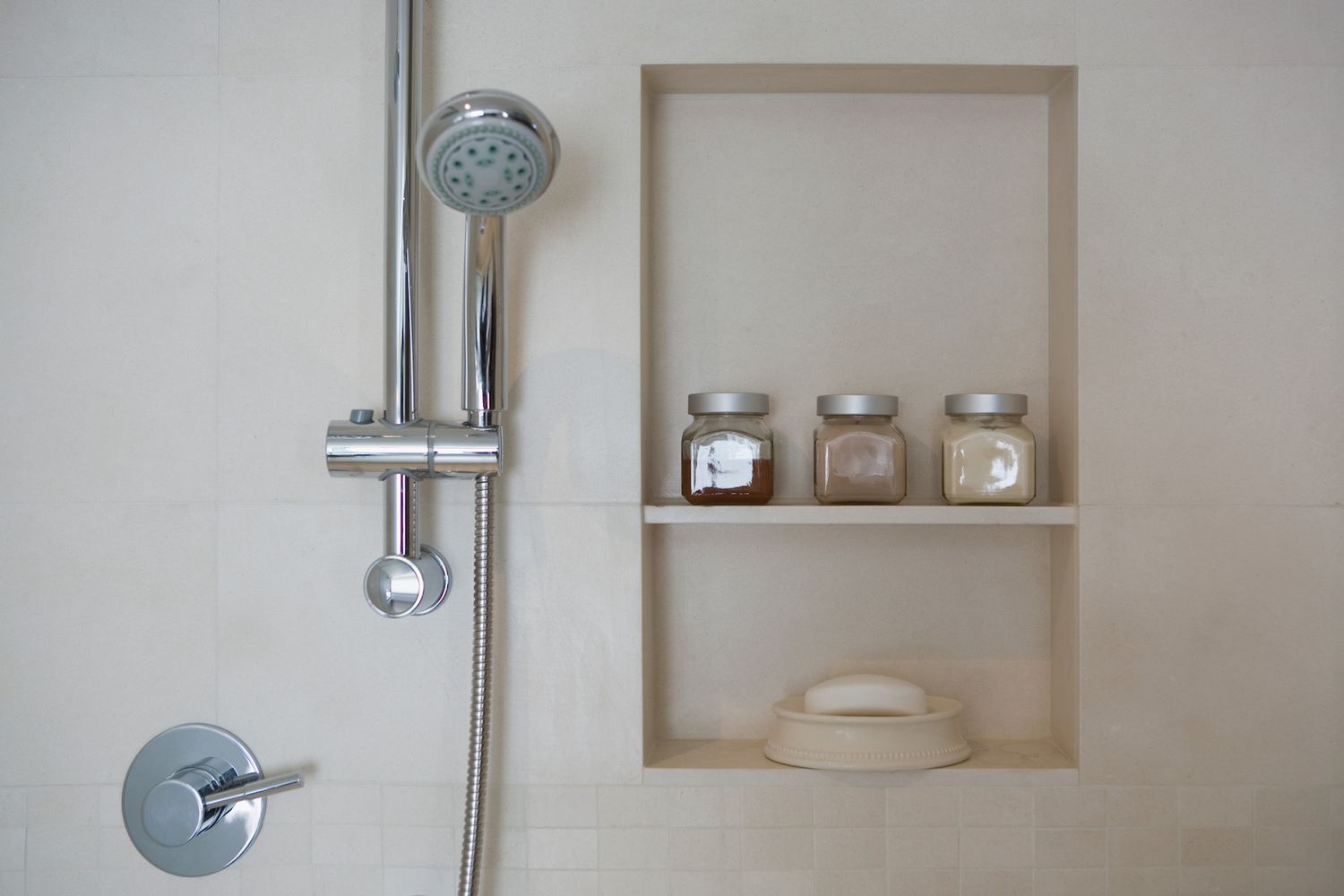
2 of 10 How to Clean the Shower Head
What to do: Take it from the top: Pour an ample amount of white vinegar into a plastic grocery bag (enough to fully submerge the shower head nozzle) and tie it in place for an overnight soaking. Remove it in the morning and run the water to rinse.
Why: The shower head can harbor Mycobacterium avium, a pathogen linked to pulmonary disease. Gerba says that turning on a neglected shower can send millions of germs straight into your lungs.
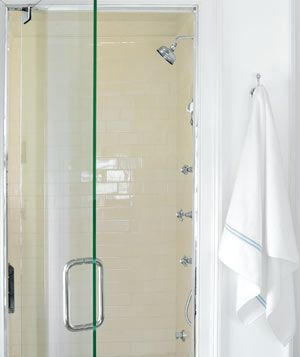
3 of 10 Clean the Shower Curtain or Doors
What to do: Give plastic shower curtains and liners a spin in the washing machine with your regular detergent and a few old towels, which help scrub away. soap scum and mildew. Rehang to dry.
For shower doors, make a paste by adding a few drops of distilled white vinegar to a cup of baking soda; apply it directly to the door (it’s nice and thick, so it will stick). Let sit for an hour, then rub with a microfiber cloth. Rinse and buff dry with a fresh, dry microfiber cloth.
The tub is less of an issue—a weekly scrubbing is usually enough. But for extra gleam, fill it with hot water, then drain. Apply a bathroom cleaner and let sit for 15 minutes before scrubbing.
To maintain it, wipe condensation from all surfaces after showering, and leave the window open for one hour a day to lower the room’s humidity level.
Why: Those germs from your shower head (and your body) can linger in your tub.
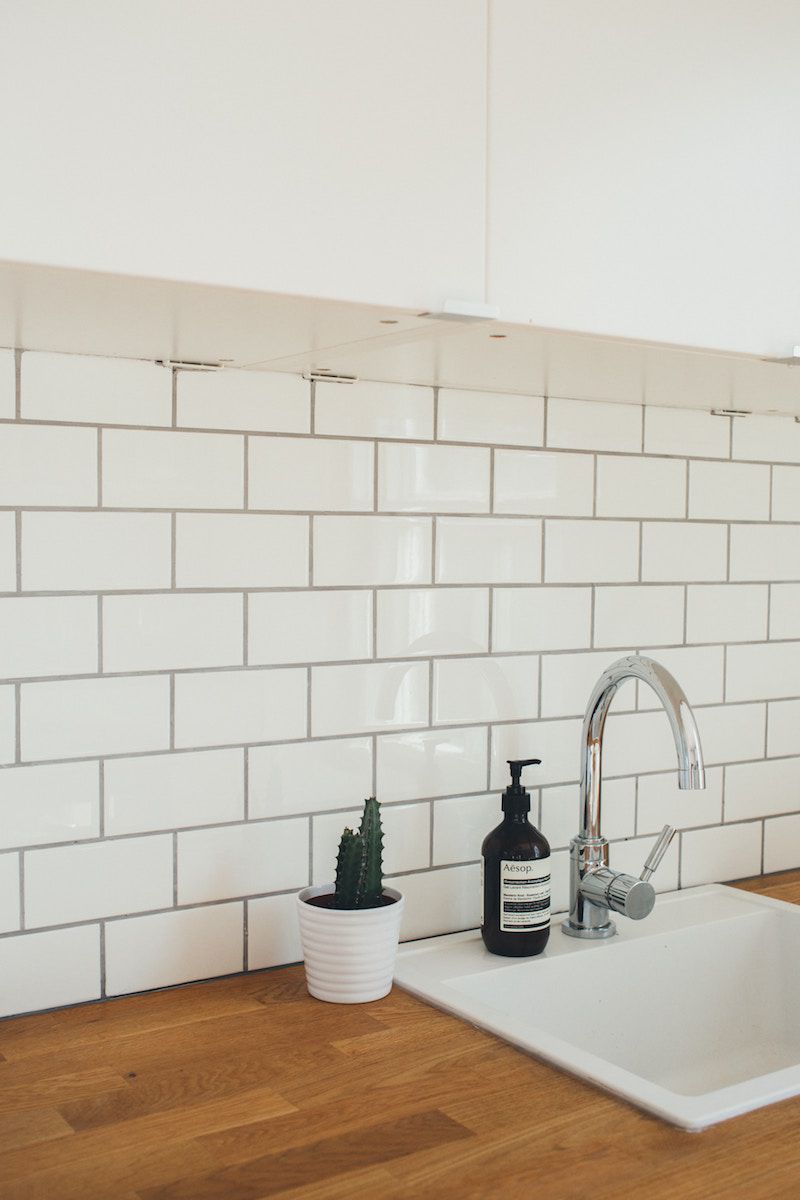
4 of 10 Refresh Dingy Grout
What to do: Dip a grout brush in straight bleach and scrub any discolored areas; rinse well. Be sure to ventilate the room.
Seal grout every six months to help prevent moisture and grime from infiltrating.
Why: Grout is porous and highly susceptible to bacteria growth.

5 of 10 Cleaning Bathroom Tile, Walls, and Ceilings
What to do: Spray tile, countertops, walls, and the ceiling with all-purpose cleaner and turn on the shower, cranking the hot water until steam builds (about five minutes).
Turn off the water, shut the door on your way out, and let the steam and the cleaner mix for 20 minutes. Then wipe down all surfaces with a clean cloth. To reach high spots, use a clean, dry microfiber mop. Wipe the tile floor, too, but only after you’ve finished the rest of the dirty work.
To minimize water marks on ceramic tile, apply a coat of car wax once a year. Water will bead up and roll off. Mildew-resistant paint can also help on untiled walls and ceilings.
Why: Soaps, along with the dirt and the skin cells they slough off, leave behind a microscopic film.

6 of 10 How to Get the Toilet Sparkly Clean
What to do: Pour a cup of baking soda into the bowl. Let sit for a few minutes; brush, and flush. Still seeing spots? A damp pumice stone is abrasive enough to remove lime scale and mineral deposit stains but gentle enough not to damage surfaces.
In cases of extreme grime buildup (or acute toilet-crevice trepidation), invest in a small, light-duty electric pressure washer. It lets you blast hard-to-reach areas, like the spots where the hinges meet the seat, from a safe distance. Start on the lowest setting—you’ll be amazed by what comes out.
Close the lid when you flush, and use the vent fan (it sucks up bacteria before they can settle). If you’re not already storing toothbrushes and contact lenses inside the medicine cabinet, start now.
Why: Gerba says that a flushing toilet, when viewed in slow motion, resembles a fireworks display. And since germs linger in the bowl even after flushing, bacteria, such as E. coli and salmonella, can fly into the air and land on the seat, the handle, and other surfaces.
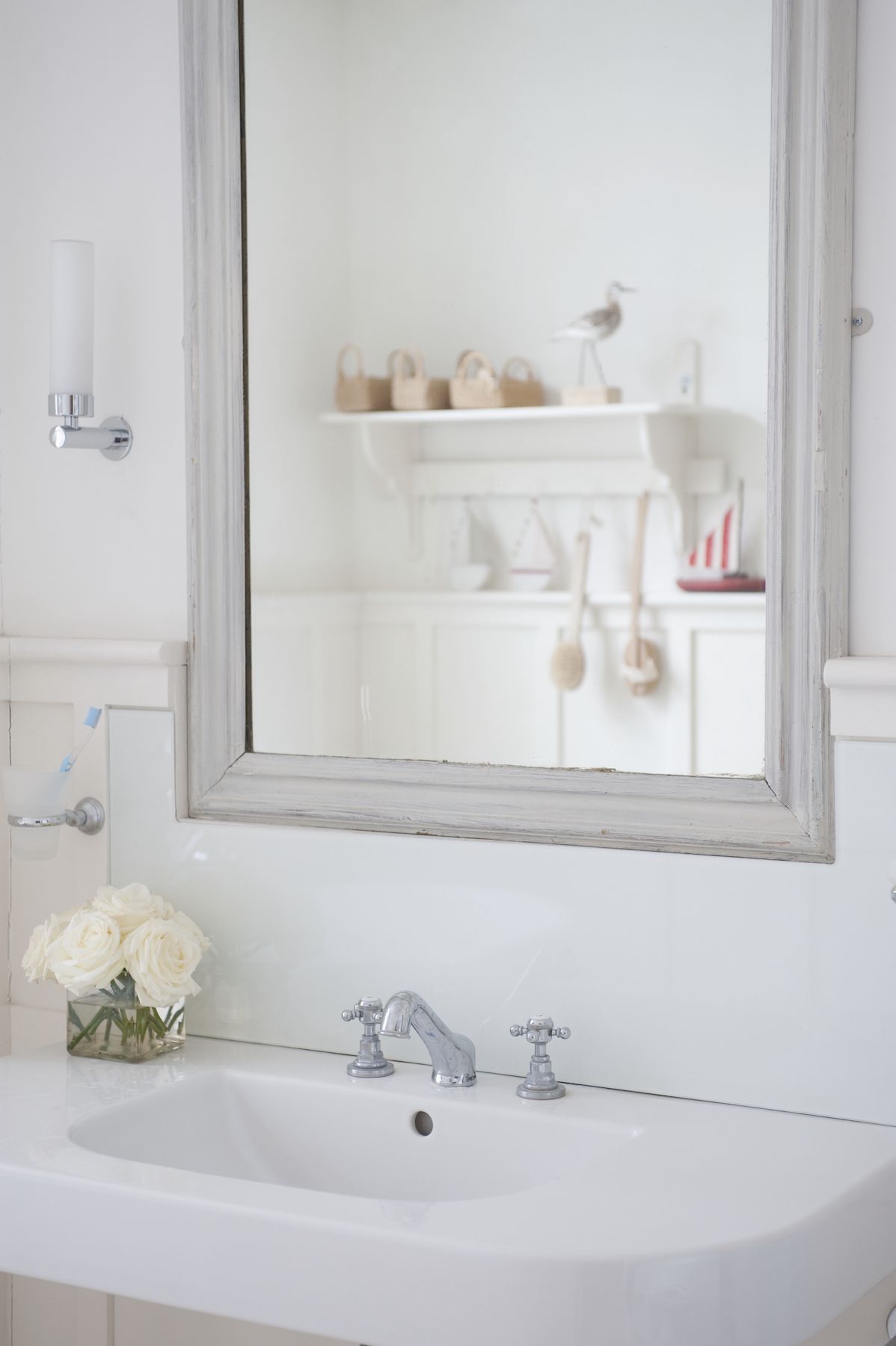
7 of 10 How to Clean the Bathroom Sink
What to do: Pour white vinegar or baking soda down the drain and flush with hot water. For the faucet, Gerba recommends disposable disinfecting wipes, which significantly reduce bacteria. (In contrast, cloths may just move germs from one spot to another; Gerba has even found bacteria from the toilet bowl living in the kitchen sink.)
If you must use cloths, be fastidious about where each one is employed and stored. When the handles are done, floss the faucet (yes, you read that right). The stringy stuff is perfect for tackling that narrow, grimy space where the base of the faucet and the taps meet the sink.
Why: Prepare to shudder: The sink drain wins for highest bathroom bacteria count—topping even the toilet seat. In his research, Gerba has detected as many bacteria down there as you would find on a cutting board used to slice raw meat. And faucet handles? You touch them after using the toilet and before washing your hands. Eww.
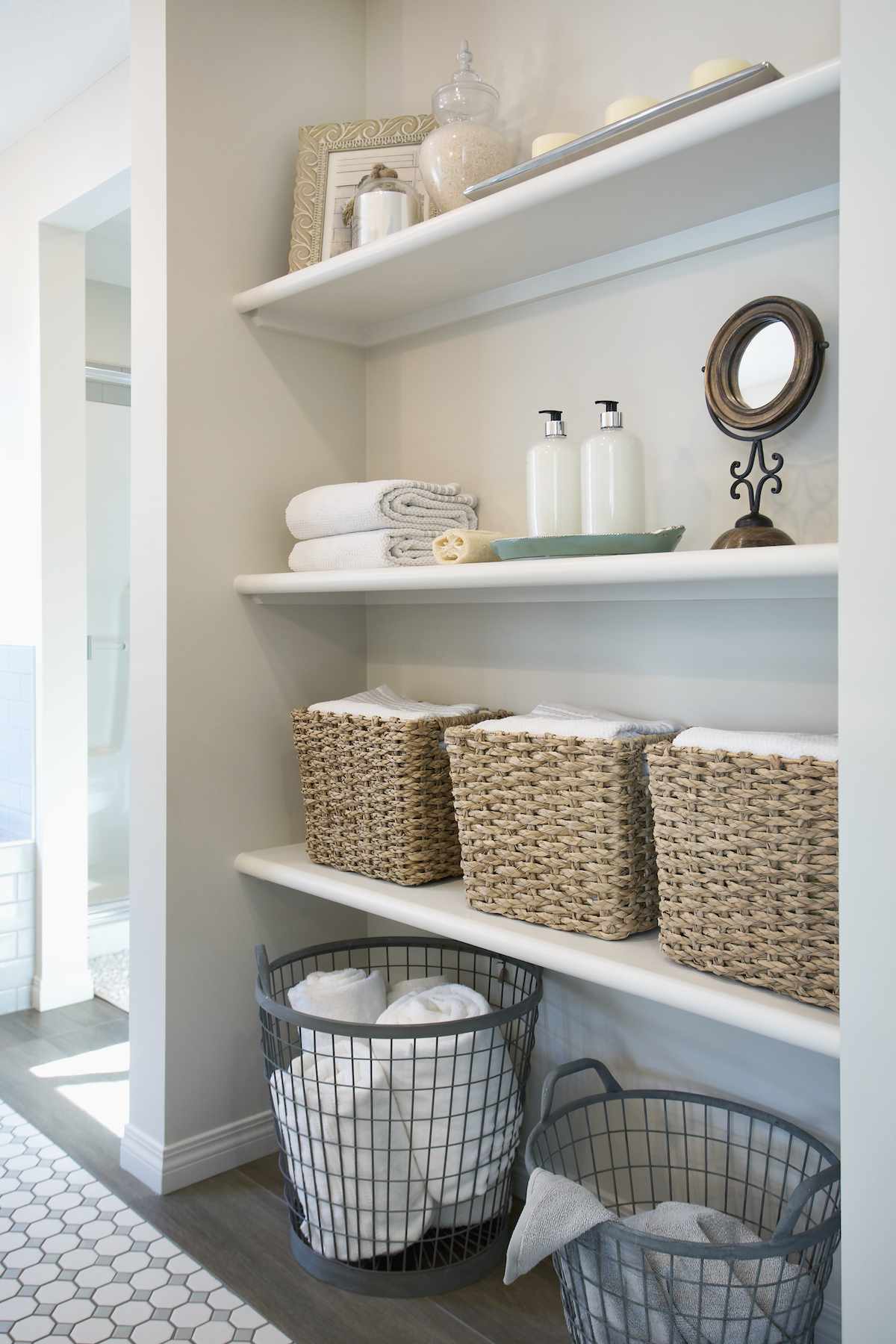
8 of 10 Wash Hand Towels the Right Way
What to do: Use the sanitizing setting if your washing machine has one (or bleach them). Replace with clean towels every three to four days.
Spread out wet towels on a bar, where air can circulate, rather than hanging them from a hook, where folds form. Don’t forget to clean the towel bar; it too collects bacteria. And avoid hanging wet towels near the toilet. (Remember that slo-mo spray we talked about?)
Why: They’re shared by many, and they trap moisture—that’s a recipe for bacteria stew.

9 of 10 Degerm the Bathroom Vent
What to do: First flip the circuit breaker. Then remove the cover and soak it in warm water and dish soap. Use the vacuum’s nozzle attachment to get gunk off the fan blades; wipe with a damp cloth. Remove dust from the motor and other nooks and crannies with a stiff, clean paintbrush, and suck up the debris with a vacuum. When it’s completely dry, replace the cover.
Later, put the fan on a switch timer (an easy job for a handyman), and run it during every shower and for 30 minutes afterward to keep moisture (and energy use) in check.
Why: While it helps reduce mold and mildew, the fan also inhales a smorgasbord of airborne particles, which can linger on the blades and the vent.
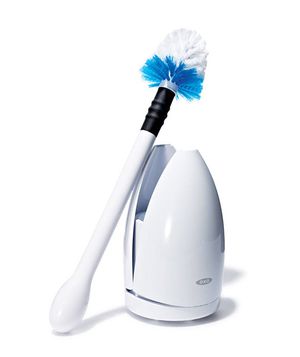
10 of 10 Clean Your Bathroom Cleaning Tools
What to do: Tackle the toilet brush itself, which you should clean after every use. Here’s how: Secure the brush handle between the already-cleaned seat and the basin so that it hovers over the bowl; pour bleach over the bristles. Let stand for a few minutes, then douse with a pitcher of clean water. Next, fill the brush canister with warm, soapy water and let sit; dump the dirty water into the toilet.
Why: Without this deep clean, your toilet brush could simply be a breeding ground for bacteria.
